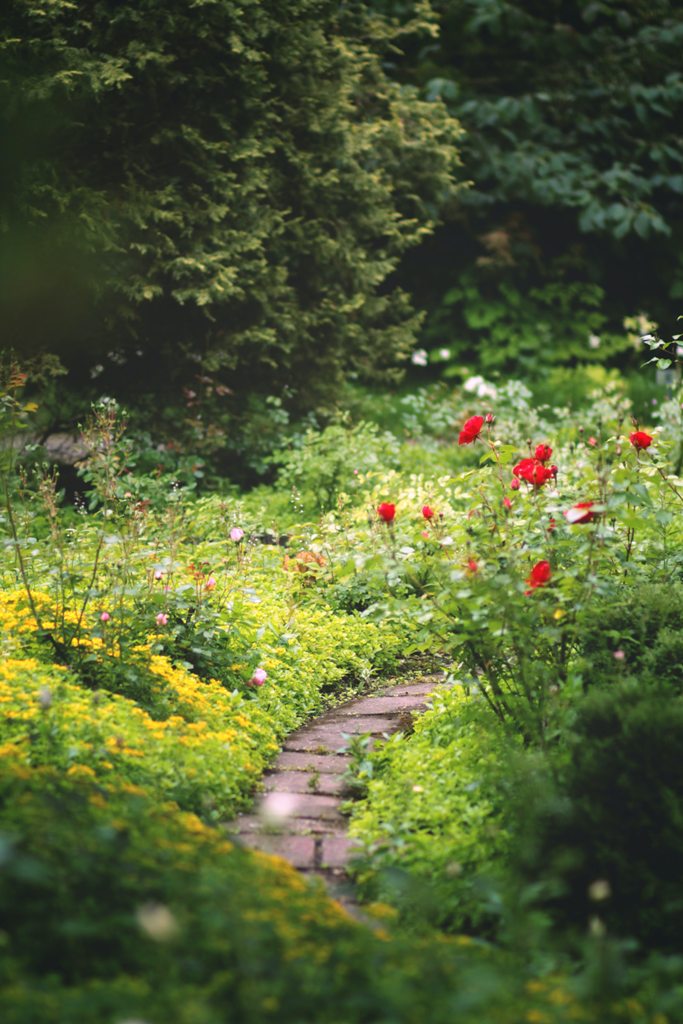Gardening is engaging as it allows you to be creative and spend more time outdoors. In addition, as many studies have shown, gardening is great for your mental and physical health.
However, some people think of gardening as a serious job they are not ready for or don’t have time to commit to. Yes, the garden expects some attention, but it gives plenty in return.
Therefore, if you are ready to enter this exciting adventure, we have prepared a list of tips to help you take care of your garden throughout the year.

How to Keep Your Garden Neat and Healthy During Winter
Winter means less time in the garden. Although you don’t have to mow the lawn as frequently as in summer, there are a couple of winter gardening jobs you should dedicate your time to and ensure your garden is well-prepared for the upcoming spring.
Plants need water even in winter, but be cautious, as too much water harms roots. Also, some vegetables and herbs grow better in colder months. In addition, winter pruning is a must if you want your roses to prosper.
Five winter gardening tips worth considering:
- Add a layer of organic mulch over your garden beds to protect plants from freezing
- Cut dead leaves and branches for better growth in springtime
- Grow winter vegetables such as carrots, lettuce, brussels sprouts, and garlic
- If you have citrus trees, winter is an ideal time to fertilize them
- Watering is critical during winter, but make sure not to overwater the plants

Spring Gardening
Spring is, for a reason, the preferable season for many, as it is not too hot as summer, but nature awakens, and days are longer, positively affecting our mood.
Spring also means it’s time to spend more time in the yard, preparing your plants for the summer. As a result, the list of gardening activities becomes longest and can be divided into early, mid, and late spring.
For instance, in early spring, you should:
- Clean the garden beds by removing dead leaves and other debris
- Remove winter mulch
- Plant some early-spring veggies, such as peas, potatoes, and artichokes
On the other hand, mid-spring is ideal for:
- Planting perennials
- Planting trees and adding new shrubs
- Adding a fresh layer of mulch around new plants
Finally, the late spring is for:
- Summer-season vegetables, like peppers and potatoes
- Gladiolus, dahlias, and other summer-blooming bulbs

Summertime Gardening
We spend the entire spring taking care of our garden, preparing it for summer, and making it our green oasis for hot days. However, even if you finish all the ”hard” gardening work from March to June, you still need to take specific actions to keep your garden beautiful until fall, and this is particularly important if you are gardening in New Mexico or somewhere else with a hot and dry climate.
Three things to pay attention to in summertime:
Water
High temperatures dry the soil, and it is critical to water the plants frequently but according to the type. The ideal time for watering plants is early morning or after the sun goes down, as the temperature does the same.
Make watering straightforward by using:
- Sprinklers
- Rain barrel
- Automated irrigation system
Of course, it all depends on your garden size and plants’ watering needs.
Nutrition
High temperatures may harm the soil. To avoid severe damage, add organic fertilizers. If you are new to gardening, plenty of YouTube videos show how to make your compost.
Shade
Although some vegetables do well in high temperatures, constant sun exposure may harm your plants. The solution is to provide shade by adding shade cloth. The cloth comes in different densities (from 5% to 95%) and colours, such as black, brown, white, and blue.

Autumn
Once summer says goodbye until next year, it’s time to think about autumn gardening activities. Fall is like spring, a preparation season, as you want to make your garden cosy and protected during winter.
Autumn is ideal for:
- Establishing your lawn’s condition and fertilizing it
- Planting or transplanting trees and shrubs
- Fertilizing roses
- Plant autumn vegetables like kale, cabbage, broccoli, Asian greens, and cauliflower
- Make the most out of fallen leaves – make compost
Gardening is not a 24/7 job but requires dedication. Although each gardener has a different perception of what is an ideal formula for a perfect garden, some ground rules apply to each yard: proper watering, fertilization, and love.





[…] RELATED: Taking Care of Your Garden Throughout the Year […]
[…] RELATED: Taking Care of Your Garden Throughout the Year […]
[…] RELATED: Taking Care of Your Garden Throughout the Year […]
[…] RELATED: Taking Care of Your Garden Throughout the Year […]
[…] RELATED: Taking Care of Your Garden Throughout the Year […]
[…] RELATED: Taking Care of Your Garden Throughout the Year […]
[…] RELATED: Taking Care of Your Garden Throughout the Year […]